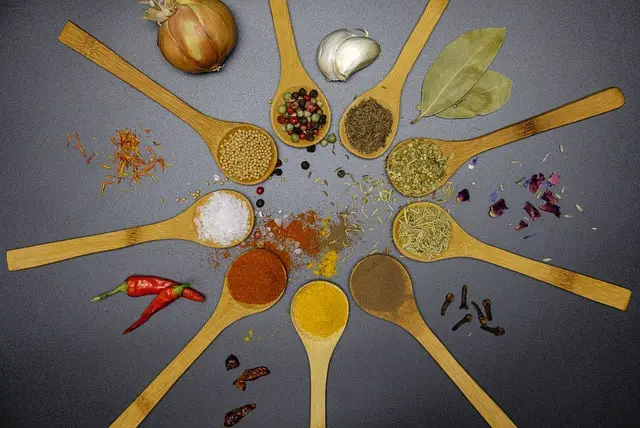Spices have the power to transform simple dishes into vibrant, flavorful experiences. Whether you’re a seasoned cook or just starting out, creating your own spice blends is a fun and easy way to add a personal touch to your cooking and baking.
In this article, we will explore the basics of spice blending and provide you with some examples of spices to blend and how to use them in cooking and baking.
The Basics of Spice Blending
The first step in creating your own spice blend is to choose the spices you want to use. Consider the flavors you like and the dishes you want to use your blend in. Some common spices to start with include cumin, coriander, paprika, cinnamon, and chili powder. You can also experiment with more exotic spices like turmeric, cardamom, and star anise.
When blending spices, it’s important to consider the ratios of each spice. Generally, a blend will have a dominant spice, with the other spices serving to complement or balance the flavor. For example, in a chili powder blend, cumin and paprika might make up the majority of the blend, with a smaller amount of chili pepper and garlic powder to add heat and depth.
Another important aspect of spice blending is toasting the spices before grinding. Toasting brings out the natural oils in the spices and enhances their flavor. To do this, simply place the whole spices in a dry pan over medium heat and stir until fragrant, about 3-5 minutes. Let them cool before grinding in a spice grinder or using a mortar and pestle.
Examples of Everyday Spice Blends and How to Use Them
Here are some examples of home spice blends for everyday cooking that can save you money compared to buying them pre-blended:
- Italian Seasoning: Mix dried basil, oregano, thyme, rosemary, and garlic powder for a flavorful blend that can be used in pasta sauces, marinades, and rubs for meat. Very useful in a wide range of dishes.
- Taco Seasoning: Combine chili powder, cumin, garlic powder, paprika, and dried oregano for a versatile blend that can be used in tacos, chili, and other Mexican-style dishes. Saves you buying a more expensive taco seasoning kit that will probably contain the same spices.
- Curry Powder: Mix turmeric, cumin, coriander, cinnamon, and cayenne pepper for a spicy and aromatic blend that can be used in curries, stews, and rubs for chicken or tofu.
- Chicken Seasoning: Combine dried thyme, rosemary, paprika, garlic powder, and onion powder for a blend that is perfect for seasoning chicken, vegetables, and soups. You can easily used it as a rub for various chicken pieces.
- Pumpkin Pie Spice: Mix cinnamon, ginger, nutmeg, allspice, and cloves for a warm and fragrant blend that is perfect for adding to pumpkin pie, baked goods, and hot drinks.
By making your own spice blends at home, you can save money, control the quality and freshness of the spices, and experiment with different flavor combinations to find your perfect blend.
Examples of Exotic Spice Blends and How to Use Them
So if you’ve already made the everyday spices and want something a bit more exotic, here are a few well-known spice blends used around the world.
- Garam Masala: This classic Indian spice blend is made from a mix of cinnamon, cardamom, cloves, cumin, and coriander. It’s perfect for flavoring curries, stews, and roasted vegetables.
- Ras el Hanout: This North African spice blend is a mix of sweet and warm spices like cinnamon, nutmeg, cumin, and ginger. It’s great in rubs for meats and roasted vegetables, and also adds depth to stews and soups.
- Herbes de Provence: This blend of dried herbs commonly includes thyme, rosemary, marjoram, and basil, and is a staple in French cooking. Use it to flavor roasted meats, vegetables, and sauces.
- Cajun Seasoning: This spicy blend from Louisiana is made from paprika, cayenne pepper, garlic powder, and black pepper. It’s perfect for seasoning seafood, meats, and stews.
- Chinese Five Spice: This blend of cinnamon, cloves, star anise, fennel, and Szechuan peppercorns is commonly used in Chinese cooking. Use it to add depth to stir-fries, soups, and marinades.
Summary
Creating your own spice blends is a fun and easy way to add a personal touch to your cooking and baking. Start with a combination of spices that you like and experiment with different ratios to find the perfect blend for your taste.
Not only can you have the satisfaction of quickly putting together your own blends, you’ll probably find you can easily save money too as some spice blends can be quite expensive when bought pre-made.
Whether you’re using a classic blend like Garam Masala or creating your own unique blend, don’t be afraid to get creative and have fun with it.

